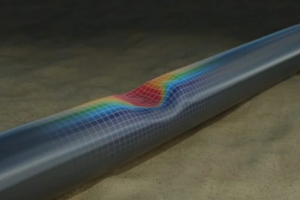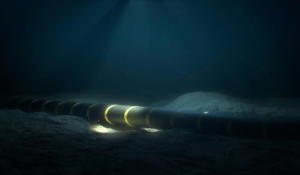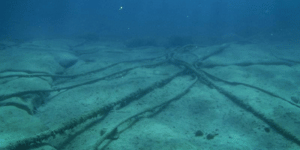2 min read
Assessment of Fatigue of a Subsea Pipeline Including Analysis of Dents
Kate Aguilera Nov 3, 2023 11:01:45 AM

Introduction
A client of ours - one of the major operators - had plans to re-develop two of their existing fields in the United Kingdom Continental Shelf (UKCS). The objectives of the re-development were to increase production yields and increase the life of the field.
Part of the redevelopment would result in increased throughput for two import/export trunklines used to transport produced gas. This in turn would result in higher operating pressures in these lines. Since the lines were not designed for the higher expected pressures, it was important for us to understand the effect of such on the lines fatigue life.
Scope
The client requested that we conduct a study to determine the fatigue life of the two pipelines both at pre-development operating pressures as well as the proposed higher operating pressures. An additional factor potentially affecting the fatigue life under investigation was damage to the external coating of one of the trunklines caused by a previous anchor strike. The concern was that the damage may have extended to the steel pipework and we therefore had to include this in our analysis to determine the effect of any potential structural damage on the fatigue life.
Analysis
The first phase of our analysis used operational pressure data for both pipelines – collected since their commissioning – to determine the fatigue life of each.
Fatigue damage was calculated in accordance with the Fatigue Design of Offshore Steel Structures Standards (DNV-RP-C203) and using the rainflow method. The subsequent remaining fatigue life was calculated in accordance with Submarine Pipeline Systems Standards (DNV-OS-F101).
Forecasted data for expected increased operating pressures was re-scaled to represent the higher maximum allowable operating pressure (MAOP). Calculations to determine the fatigue damage and remaining fatigue life could then be re-run for the re-scaled pressure data in accordance with the same relevant standards.
The next phase of analysis was an assessment of structural damage caused by the anchor strike and its effect on fatigue life. No definitive sizing of the existing damage had been performed so we established a range of assumed dent sizes and conducted sensitivity checks corresponding to each assumed dent size. We could then calculate fatigue damage using Fowlers method and in turn calculate fatigue life using the Submarine Pipeline Systems Standards (DNV-OS-F101).
Outcomes
The results of our analysis showed that the predicted lives of both pipelines at the proposed increased operating pressure exceeded their respective design lives.
One factor highlighted by our analysis is that pipeline fatigue life is significantly affected by the presence and size of a dent. However, at the maximum assumed dent depth at the new pipeline MAOP the remnant fatigue life still exceeded the design life.
We confirmed that it was unlikely that the historic dent from the anchor strike posed an immediate threat to the integrity of the pipeline.
Our recommendations to the client did however suggest that the existing dent should be reviewed and accurately sized to draw direct comparison against the assumed dent sizes used in our analysis.
Conclusion
The results of our analysis give the client assurance that it was safe to operate both pipelines at the proposed new operating conditions. They could then progress with the field re-development project having the technical assurance that the integrity of existing subsea infrastructure would not be compromised.



